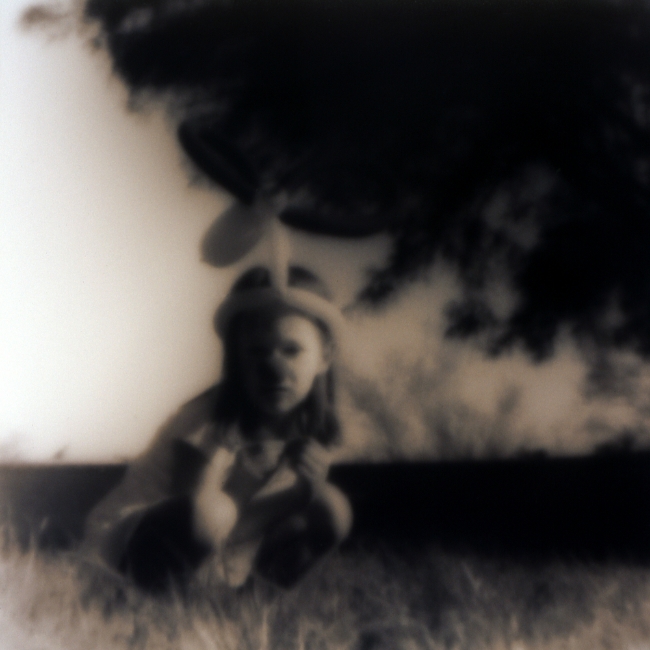Embrace the Blur. That could be Tuscon photographer Ken Rosenthal’s motto. Where most of us generally try to reduce blurring, Rosenthal relies on it. His blur, however, is an expressive blur. It’s a blur that serves a purpose. Several purposes.
Rosenthal earned a BA in still photography at the University of Southern California and a MFA in photography from the School of the Art Institute of Chicago. Almost from the beginning his work focused on–well, on the unfocused. His first series, entitled Seen and Not Seen, grew out a relatively innocuous experience. While thumbing through an old family photo album he had an epiphany almost all of us have experienced: the realization that the people in the old pictures could be almost anybody, or almost anybody’s relatives.

Rosenthal says that his familiarity with his extended family was based more on the images in the photo album than on actual experience. His memories of the people in the photographs were influenced as much or more by seeing those same photographs over and over than by any actual interaction with those people.
He has described Seen and Not Seen as “a merging of the autobiographical and the universal.” By deliberately blurring the images, he has created a family album for everybody.

Although Rosenthal is a photographer, his role in the Seen and Not Seen series could be more accurately described as darkroom artist. He took actual old family photographs from his family photo album and re-photographed them with a medium-format camera. In the darkroom he created split-toned silver-gelatin prints from the negatives. All the prints were individually toned using multiple toners, selectively applying the toners–and sometimes applying bleach–with a brush.
The resulting images are gently ambiguous. Rosenthal has repeated that process with slight variations in his later series. Although the process remained the same, the subject matter changed. His next series, Not Dark Yet, was a response to the terrorist attacks of September 11, 2001. Although he was not directly affected by the those events, they altered his perception of the world. He was no longer interested in creating nostalgic, dreamy images of a safe and happy world. Instead of using photos from the family album, Rosenthal created new images, and even though the photographs in this series have no obvious connection to the 9/11 attacks, they became darker in tone, the ambiguity turned threatening, the blur became a blur of anxiety.

In his most recent series, A Dream Half Remembered, Rosenthal continues to apply his trademark blur to new images. His subject matter, however, has turned inward. Where Seen and Not Seen examined the universality of family photography and Not Dark Yet explored the anxiety that gripped the U.S. after the attacks of 9/11, Rosenthal’s latest series is a probe into his own dreams. He has said he became interested in looking at “the shards of memory retained from the dream state, and the often-random structure and narrative of dreams.”
The images from this series range from the happy to the menacing, from the bright to the dark, from the endearing to the alarming. Rosenthal’s partially-recalled nightmares are as likely to find their way into his photographs as his more cheerful dreams.

By stripping away and blurring all semblance of individuality, Rosenthal has attempted to make images that are universal. I think he has succeeded in a smaller context; I think he has made images that are universal to the middle classes. His family albums are photographs of middle class conventions and rituals, his memories are middle class memories, his anxieties are the anxieties of the middle class, and his half-remembered dreams are the same.
I very much like Rosenthal’s work. I am very much taken with his approach. I know others are effectively using a similar approach to look at other social environments and social groups. I find myself wondering, though, when/if Rosenthal will move on from that approach. And I find myself wondering how difficult it would be for a photographer so intimately linked to a specific approach to move on.

